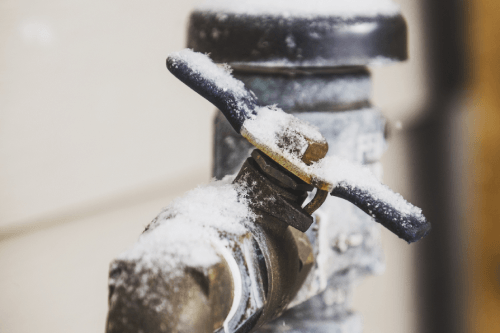
The winter season is enjoyable. You get to glide across the ice, build a snowman, set up backyard games, and light winter cozy fires. However, for other people, winter comes with problems. We all know that extremely cold weather can freeze and damage water pipes. A simple explanation for this phenomenon is that water freezes and expands during winter, pushing the pipe walls outside until they burst. The result is water flowing from a broken pipe until someone shuts off the valve.
Damages caused by broken pipes can be severe and expensive to repair. Luckily, you can save your pipes from damage by performing some simple tasks. Here are some tips on how to prevent your pipes from freezing this winter.
1. Insulate Your Pipes
Pipes in lofts, basements, or outside are most likely to freeze because these areas are not heated. The pipes also lack insulation. However, you can change the condition of the pipes by insulating them with foam-based sleeves. The thinner the pipe is, the thicker the insulation needs to be. Thinner pipes are more likely to freeze than thicker ones. It’s also important to ensure that there are no gaps at the valves or bends.
The first step when insulating your pipes is to survey them. Get a paper, pen, and tape and walk around your house. Pinpoint the pipes you want to cover. Measure each exposed pipe and record the diameter and length. Take the measurements to a recognized construction store and buy enough insulation to cover all the pipes.
The most common insulator is polyethylene. It looks like black foam and is mostly used to insulate the exterior pipes. For the interior pipes, experts recommend fiberglass sleeves. However, remember to wear protective clothing when insulating the pipes.
To wrap insulation on the pipes by hand, pull the insulation seam open and press the insulation around the pipe. Repeat the process until you finish insulating all the pipes. Finally, secure the insulation with tape. You can run the tape up to five times until everything is in place.
2.Use Heating Tape
While insulation tape works as a blanket for your pipes, heating tape provides extra insulation from the cold. You can either purchase the manual or automatic heating tape. While the automatic heating tape uses sensors to turn on and off, the manual tape requires you to plug and unplug it when necessary.
Both heating tapes are appropriate. Even though the heating tape is not a requirement, it adds necessary heat to prevent the pipes from freezing. Nonetheless, be careful when using the tape to prevent accidental fires from happening.
3. Leave Your Heater on
You also need to ensure that your house is warm every day. If you’re lucky to go on vacation to warmer areas, leave the heat on. The heat doesn’t need to be high. Just ensure that it’s above 50 degrees Fahrenheit. Turning the heater off will not save you any money. Instead, the pipes might end up bursting and causing great damage to your home. Also, ensure that you drain down the entire system until there’s no water left in the pipes.
4. Seal Cracks and Holes
Any cracks or holes on the pipe can allow cold to drift into the pipe. During the winter season, the last thing you need is cold air in the pipes. To prevent the cold from accessing the pipe, seal up the holes, cracks, and gaps. If possible, you should seal the interior and exterior to ensure that the hole is blocked completely. To get the job done easily and efficiently, use spray form. However, if the cracks are too small, you can use caulk instead.
Similarly, inspect your house for any cracks, holes, or openings. Check on the door and window frames for television or Wi-Fi cable holes. Seal the openings. The sealed spaces will contain warm air and increase your household’s insulation.
5. Keep Your Cabinet Doors Open
Pipes tend to get cold because there is no circulation of warmth under the sink. To circulate warmth, open the cabinet doors. The open cabinets will enable the warmth from the room to access the sink area. Repeat the process in your bathrooms and kitchen until all the pipes benefit from the house’s warmth.
Apart from keeping the cabinet doors open, it would help to leave other interior doors open. The open doors will ensure that warm air circulates in different rooms, preventing the pipes from freezing. However, if you have a toddler or curious pets in your house, ensure that you remove all toxic chemicals from the cabinets before leaving them open.
6.Check for Reduced Water Flow
Reduced water flow is a sign that ice is forming in your pipes. Don’t panic. You can make some adjustments to prevent your pipe from bursting. First, shut off the water supply. Then, open the faucet and allow them to thaw out.
Turning on the faucet will ensure that the drip is consistent enough to prevent the pipe from freezing. If you have both hot and cold faucets, run them consistently to prevent one side from freezing. However, if you have a single-handle faucet, set the water to warm. The process will push down the ice on the lines, preventing the pipes from bursting.
7.Maintain Appropriate Temperatures
To prevent ice blockages in your pipes, ensure that your thermostat is set at a consistent temperature during the day and night. Most homeowners prefer lowering their thermostats at night to save on electricity bills. However, lowering the thermostat is not a smart move because you might end up experiencing frozen pipes, which are more expensive to repair. Therefore, ensure that the thermostat is consistent at night and during the day. Steady temperatures will ensure that your pipes are free from ice buildup.
However, if you’re disconnected from electric power, allow the water to run slowly from the tap until you’re connected to power. Running water is cheaper than fixing a burst water pipe. Start by slowly running the hot water faucets, then do a faster run on the cold faucet.
Contact the Plumbing Experts
Freezing and ruptured pipes during the cold season are an expensive and common frustration among many homeowners. According to research, burst pipes are among the most common causes of residential property damage. The water damage can cost you around $5,000 or even more in repairs. However, you can implement the simple steps highlighted above to prevent freezing pipes and ice blockages. Although keeping your plumbing system warm during the cold season might raise your energy bills a bit, this inconvenience is well worth preventing the frustrations of a broken water line.
While there are many quick fixes for frozen pipes, working with a professional plumbing service is safer. If you need to prepare your plumbing system for the cold season or are experiencing freezing pipes, contact the professionals at Beyer Plumbing. These experts will inspect your home’s pipes for potential bursts and leaks and will make the necessary repairs. We can also help you winterize and insulate your pipework to prevent bursting and freezing incidents in the future.
Beyer Plumbing also offers gas line installations, pipe installations, water heater, leak detection, water softening, and drain cleaning services. Contact us today for all your plumbing needs if you reside in San Antonio, TX, and its environs.


